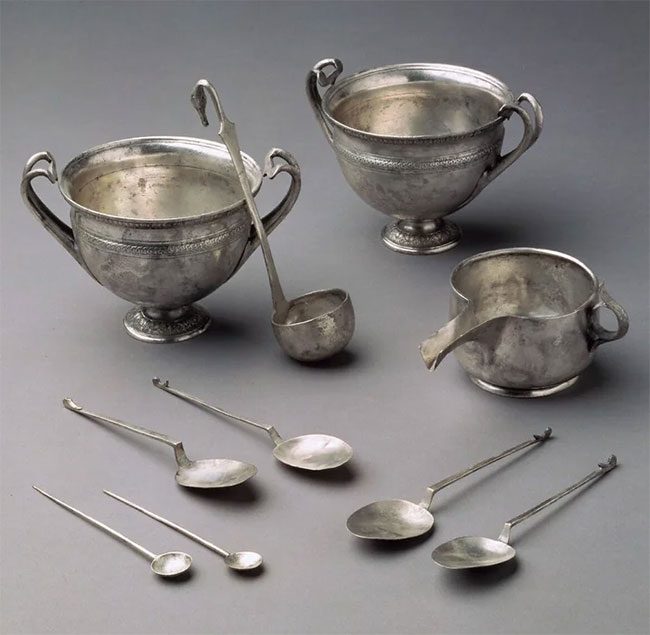The Roman Empire was once regarded as the most powerful empire in the ancient world; however, like many other empires throughout history, it eventually fell into decline.
In the history of human development, the Roman Empire left a significant mark, and there is even a saying, “All roads lead to Rome.” Over 1800 years ago, Rome began to expand relentlessly into surrounding areas, gradually establishing a vast empire spanning three continents: Asia, Europe, and Africa.
But no one could have imagined that just a few centuries later, the once-prosperous Roman Empire would suddenly decline. In its later years, the empire no longer had the strength to defeat a group of semi-civilized tribes.
Many factors contributed to the collapse of this great civilization, such as the fall of the Roman Empire around 476 AD. The gradual decline of this empire is often attributed to invasions, failed military campaigns, economic challenges, government corruption, and excessive reliance on slave labor, among other factors.
However, it was only recently that historians discovered a previously overlooked cause: the collapse of the Roman Empire was likely related to lead poisoning among the Romans.

All soluble compounds of lead are toxic. Scientists believe that the habits and preferences for using lead and lead oxide as materials for producing containers such as jars, cups, bowls, and cosmetics containing lead compounds led to chronic poisoning and premature death among the Roman elite.
Lead is a heavy metal, easily found in nature, soft, malleable, yet highly toxic. Lead is silver-white in color, but when exposed to air, it forms gray oxides on its surface. Today, lead is mainly used in construction, lead-acid batteries, solder materials, ammunition, fishing gear, and radiation-protective clothing.
Lead metal became a part of Roman life early on and provided many conveniences; cooking utensils, plumbing, water storage tanks, and their building materials were all primarily made from lead.
However, what the Romans did not know was that lead was also a toxic heavy metal that could cause irreversible effects once it entered the human body.

The toxicity of lead is now clearly demonstrated; it can lead to long-term psychological and neurological deficits, as well as metabolic diseases. Children are particularly susceptible to lead, and the extensive use of this deadly metal within the Roman community likely resulted in a range of adverse health effects.
The ancient Romans mastered the technology of mining and refining lead very early on, resulting in a significant amount of lead products being integrated into their daily lives.
Scientists have discovered a large quantity of lead products at various Roman cultural sites. This indicates that lead played an important role in Roman life.
For example, today scientists still discuss the water supply and drainage systems of major cities in Rome; their pipes were designed very efficiently, resembling those in modern cities, and such grand plumbing systems were made of lead.
Analysis of lead concentrations and ancient pathologies has been conducted to explore the relationship between lead and health during the Roman period. This study included 173 individuals (skeletal remains) from five locations, dating from the 1st to 4th centuries AD, across the Roman Empire.
The results showed an inverse correlation between age at death and lead concentration in dental enamel. Moreover, higher lead concentrations were observed in children with evidence of metabolic bone disease compared to those without.
This research provides the first bioarchaeological evidence indicating that lead poisoning contributed to high infant mortality rates and increased illness in children during Roman times.

In fact, the Romans used lead in many areas: for making water pipes, cooking, and water storage, even in cosmetics…
The favorite drinks of Roman nobles were sugar syrup and wine, but they discovered that if wine was stored in wooden barrels, it spoiled easily and tasted sour. Therefore, the Romans stored wine in lead containers, which could make the wine taste sweeter.
Romans also used lead awnings to collect rainwater and utilized it to make sugar syrup. Some nobles even sprinkled a little lead powder into their wine to sweeten it before drinking, resulting in a significant accumulation of lead in their bodies over time.

Lead metal became part of Roman life early on.
When the concentration of lead in the body reaches a certain level, it can cause symptoms such as vomiting, gastrointestinal bleeding, headaches, seizures, as well as sudden nervous manifestations, and in severe cases, coma or even death. At lower concentrations, it can affect the human brain and nervous system.
Scientists discovered that within a few centuries, more than half of the rulers of the Roman Empire did not live to see their 30th birthday. Because the process of detoxifying lead is very slow, many people never realized that lead-containing products had made their lives worse than death itself.
Although the Roman Empire thrived for a time, lead poisoning ultimately left the Romans “miserable,” and the Roman Empire eventually met its demise.


















































